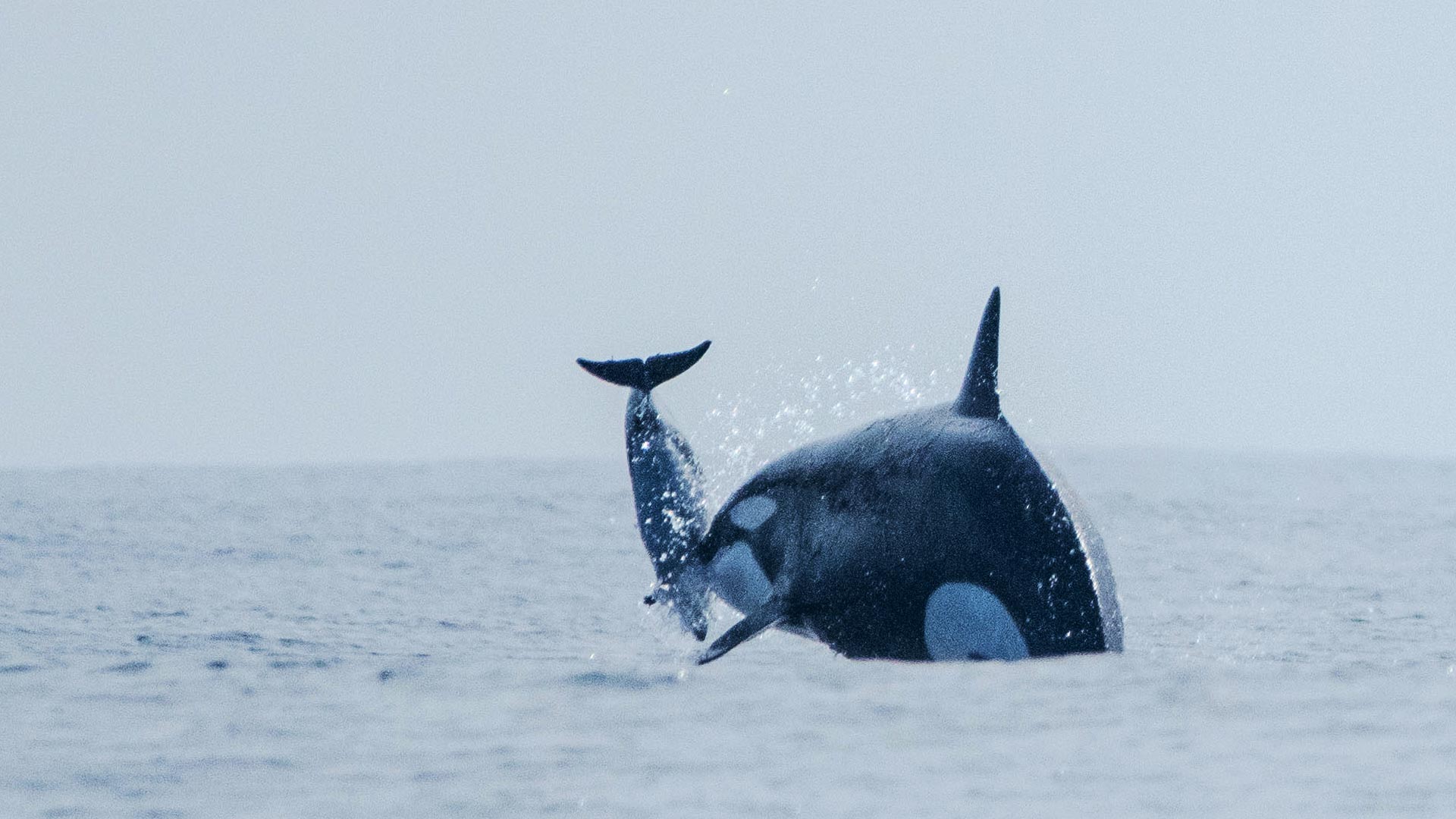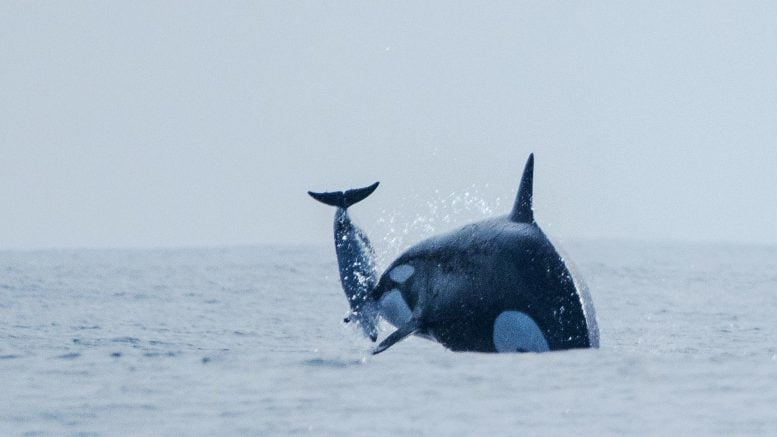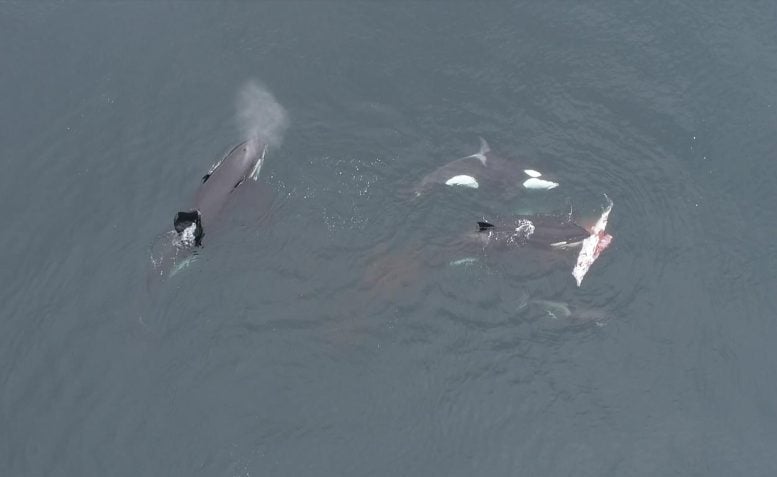

Chilean orcas have been observed hunting dusky dolphins for the first time, providing insights into their diets and helping conservation strategies.
Living in the waters of Chile’s Humboldt Current system is an elusive, little-known population of orcas. With the help of citizen science and years of dedicated research, a team of scientists led by Dr. Ana García Cegarra of the Universidad de Antofagasta has tracked the enigmatic orcas down, shedding light on their life — and dinner preferences.
The team, who previously observed these orcas using fishing boats to help them capture sea lions, have now spotted them successfully hunting dusky dolphins for the first time and sharing the food among the pod.
This research, recently published in Frontiers in Marine Science, provides new insights into how populations of orcas in the southern hemisphere are linked, promoting conservation efforts.
Challenges in Studying Marine Predators
“Studying orcas in their natural environment is very challenging as they are marine top predators, traveling long distances and living offshore, which makes observation difficult,” said García Cegarra, lead author of the study. “But understanding their role in the marine environment is crucial for the conservation of this poorly-known species in the Humboldt Current.”

Ecotypes and Dietary Preferences
Orcas are apex predators with an impressively varied diet — but not all orcas eat the same things. Populations can be assigned to different ecotypes based on their preferred foods, acoustics, and genetics, so understanding what the orcas of the Humboldt Current eat is a major step toward understanding where they fit in among the other orcas of the world.
Five different ecotypes are reported in the southern hemisphere: some, like Type A and Type B1 orcas, focus on marine mammals, while other types prefer fish. Understanding where the Humboldt Current animals fit in would help us understand the way these populations relate to each other more broadly and conserve them for the future.
Research Methodology and New Discoveries
García Cegarra and her colleagues used a combination of their own surveys and citizen science data collection from whale-watching trips and fishing vessels to monitor the population and track their hunting choices. Observers recorded the presence of orcas, group composition, and location, and took pictures and videos which the scientists could cross-reference with catalogs of known individuals. By combining this data with their own systematic surveys and drone footage, the scientists built up a map of orca presence in the area and tracked pods’ behavior and prey choices.
This allowed the researchers to capture evidence of the Menacho pod of orcas catching dusky dolphins — a species of which no orcas in this area have ever been reported successfully hunting. Dramatic images show the matriarch, Dakota, tossing a dusky dolphin into the air.
Insights on Hunting Behavior and Social Structure
These sightings could indicate that these orcas may belong to the mammal-hunting Type A ecotype. Their prey, and their small pod sizes, would be consistent with this hypothesis, although their white eye patches are smaller than is typical of Type A orcas. They have also never been recorded in Patagonia with other Type A orcas.
“We wish we could obtain skin biopsy samples to analyze their genetic data, as there is no genetic information for orcas in this region of the south-east Pacific,” said García Cegarra. “However, they are very elusive and intelligent, which makes it difficult to approach them in the boat for biopsies.”
Orca Social Behaviors and Conservation Efforts
The scientists’ observations of the dusky dolphin hunting also revealed that the Menacho pod was sharing their food. Food sharing is recorded among many populations of orcas, sometimes to help feed kin, and sometimes because the pod hunts cooperatively and everyone gets a share. In this case, García Cegarra and her colleagues suggest that the Menacho pod was sharing food with kin, similar to Type A orcas who hunt sea lions by deliberately stranding: female orcas were seen sharing meat with group members, allowing closer relations to eat first.
García Cegarra emphasized that much more information and systematic study is necessary to fully understand and protect this secretive population of orcas. “The fact that we have observed newborn calves is important, because it indicates that they are having offspring, but we don’t know their survival rate,” she said. “Thanks to citizen science, we can follow the presence of killer whales along thousands of kilometers of the coast of northern Chile — but most orca sightings are opportunistic.”
Reference: “New records of odontocete and mysticete predation by orcas in the Humboldt current system, South Pacific Ocean” by Ana M. García-Cegarra, Javier Oña, Camilo Arancibia, Luis Aguilar and Frederick Toro, 19 July 2024, Frontiers in Marine Science.
DOI: 10.3389/fmars.2024.1450624